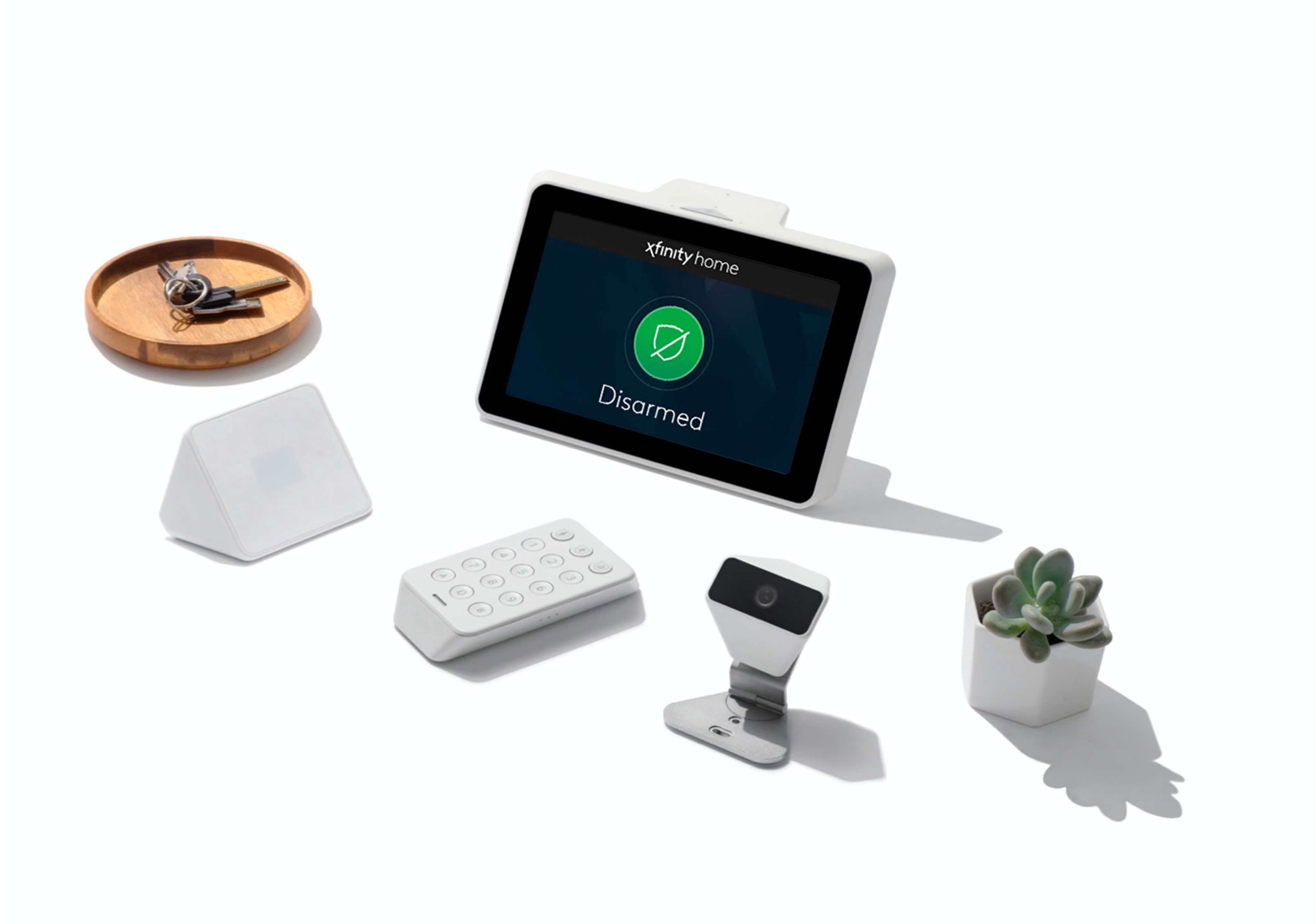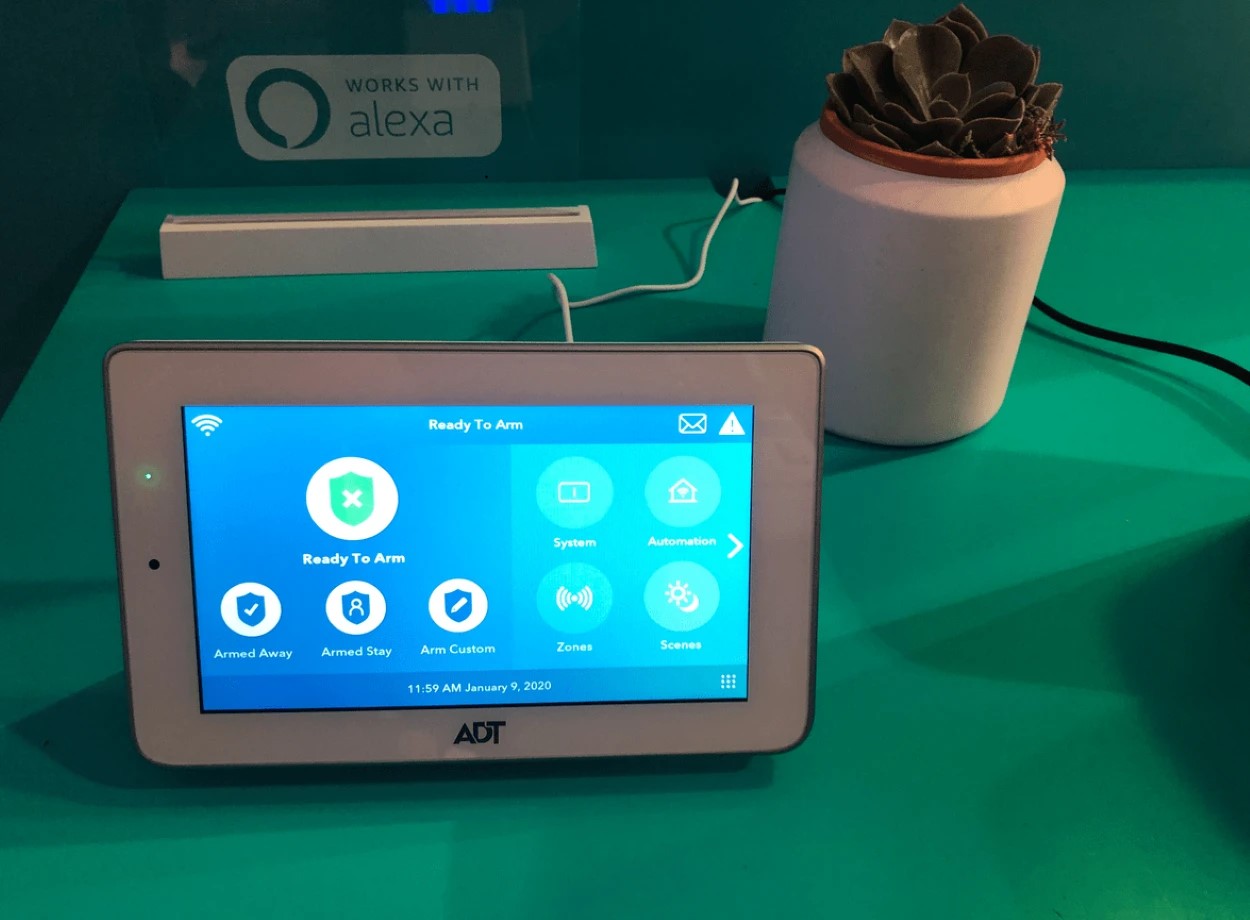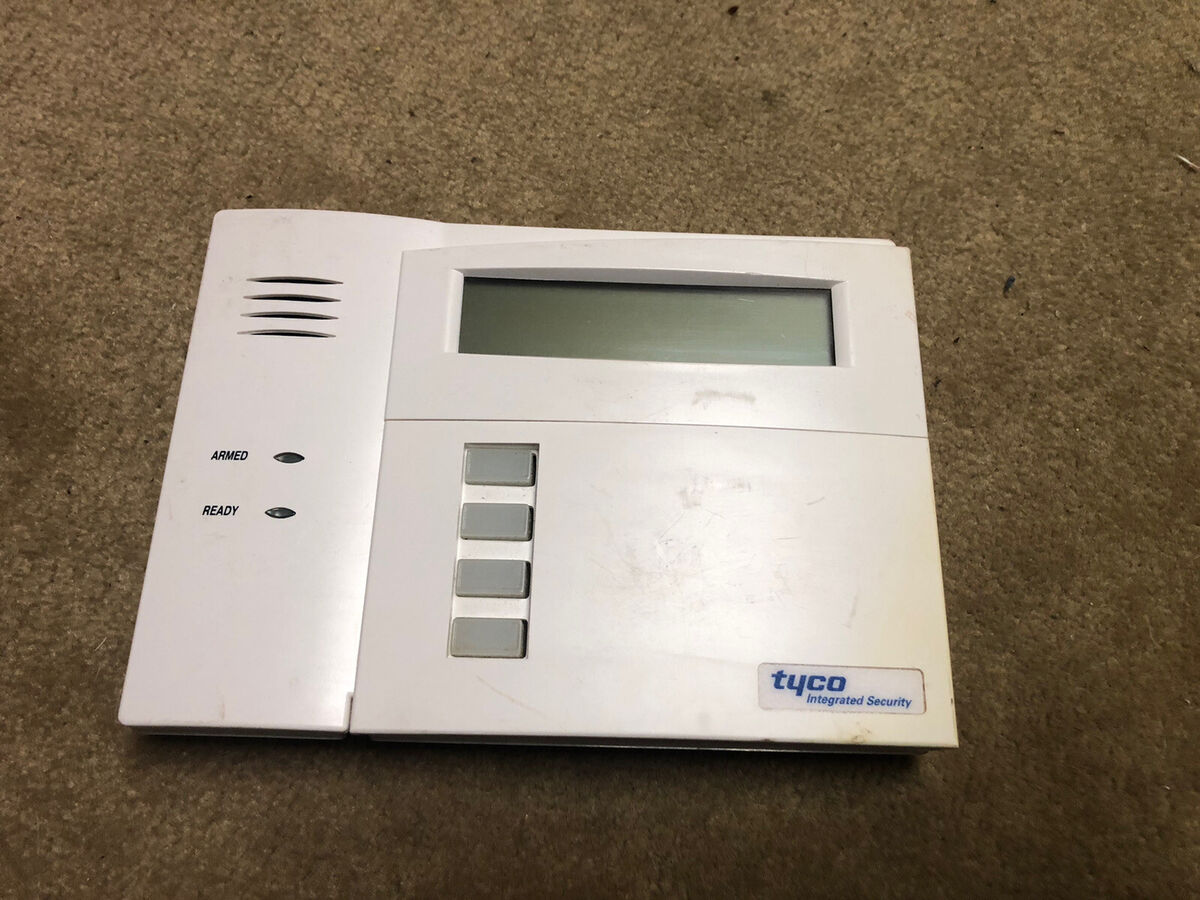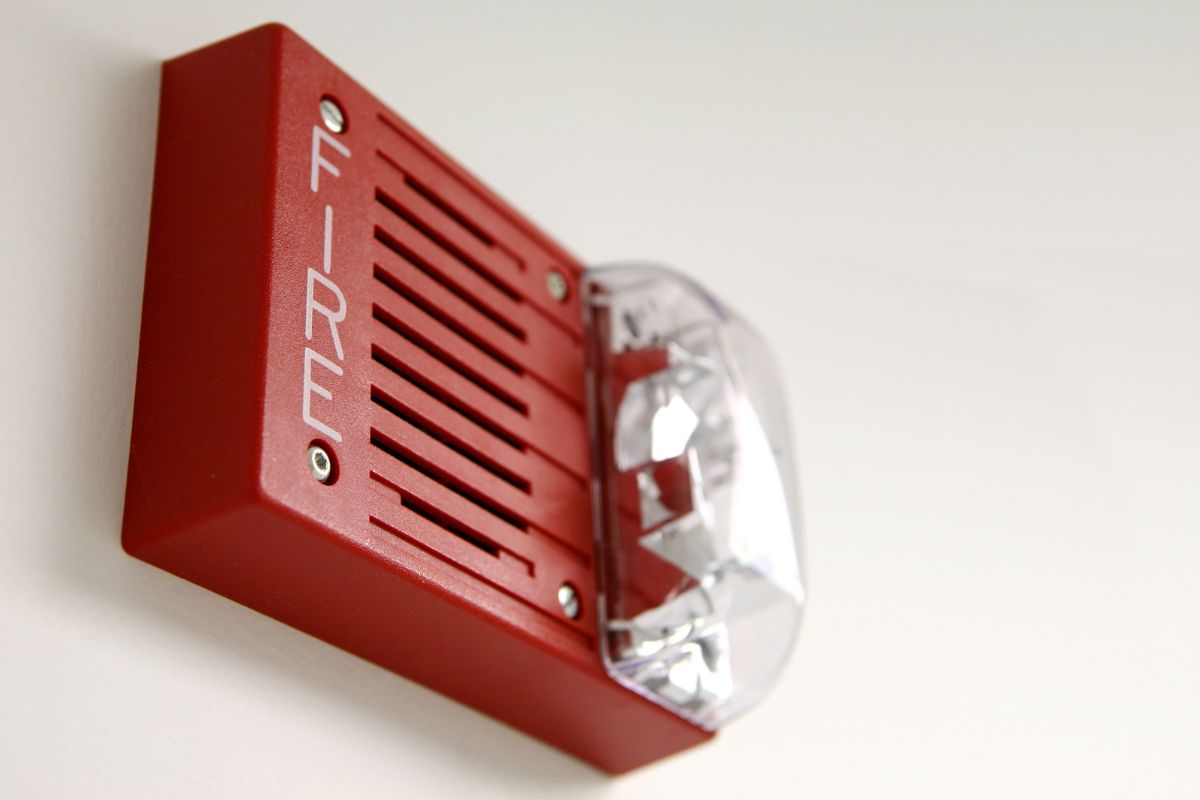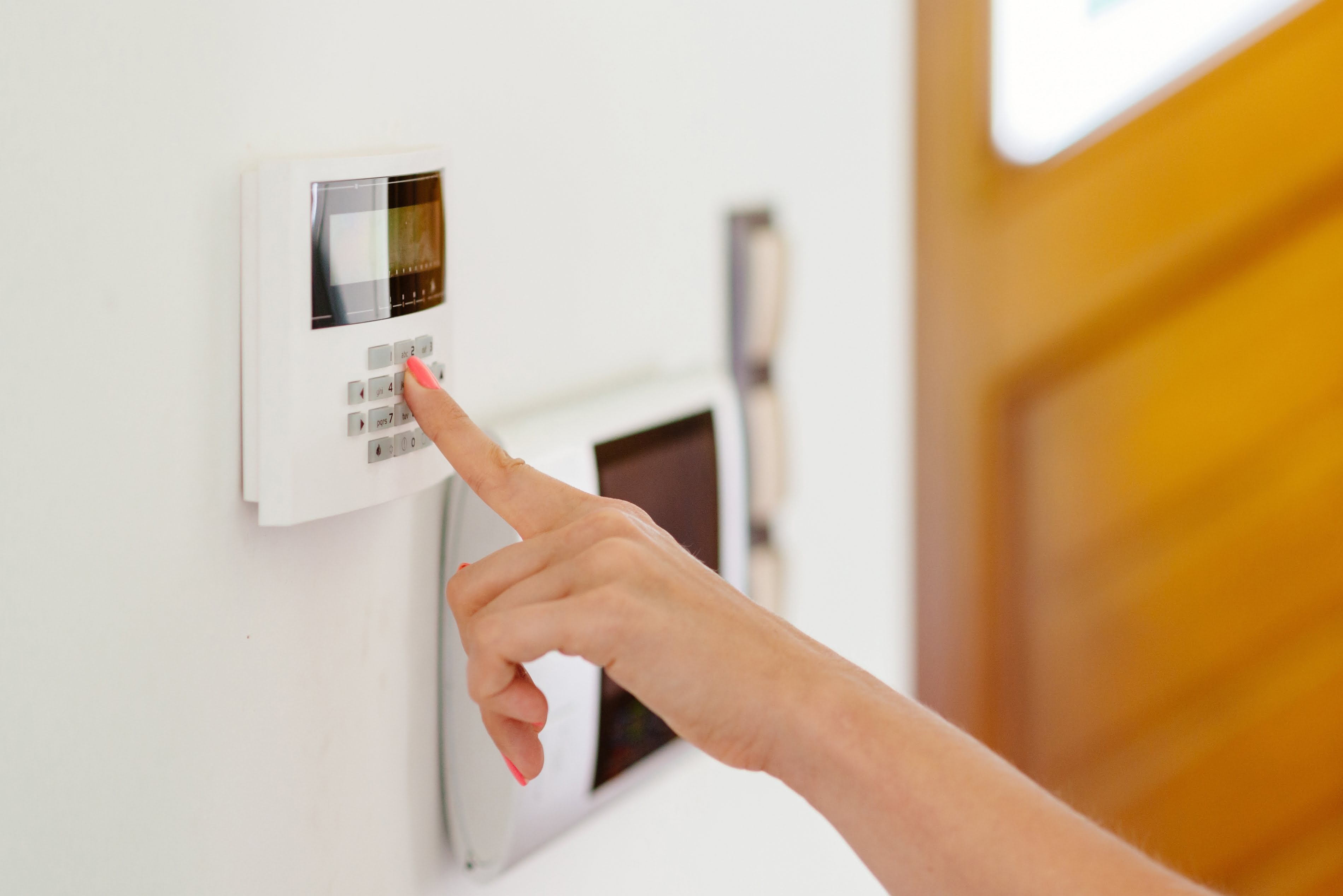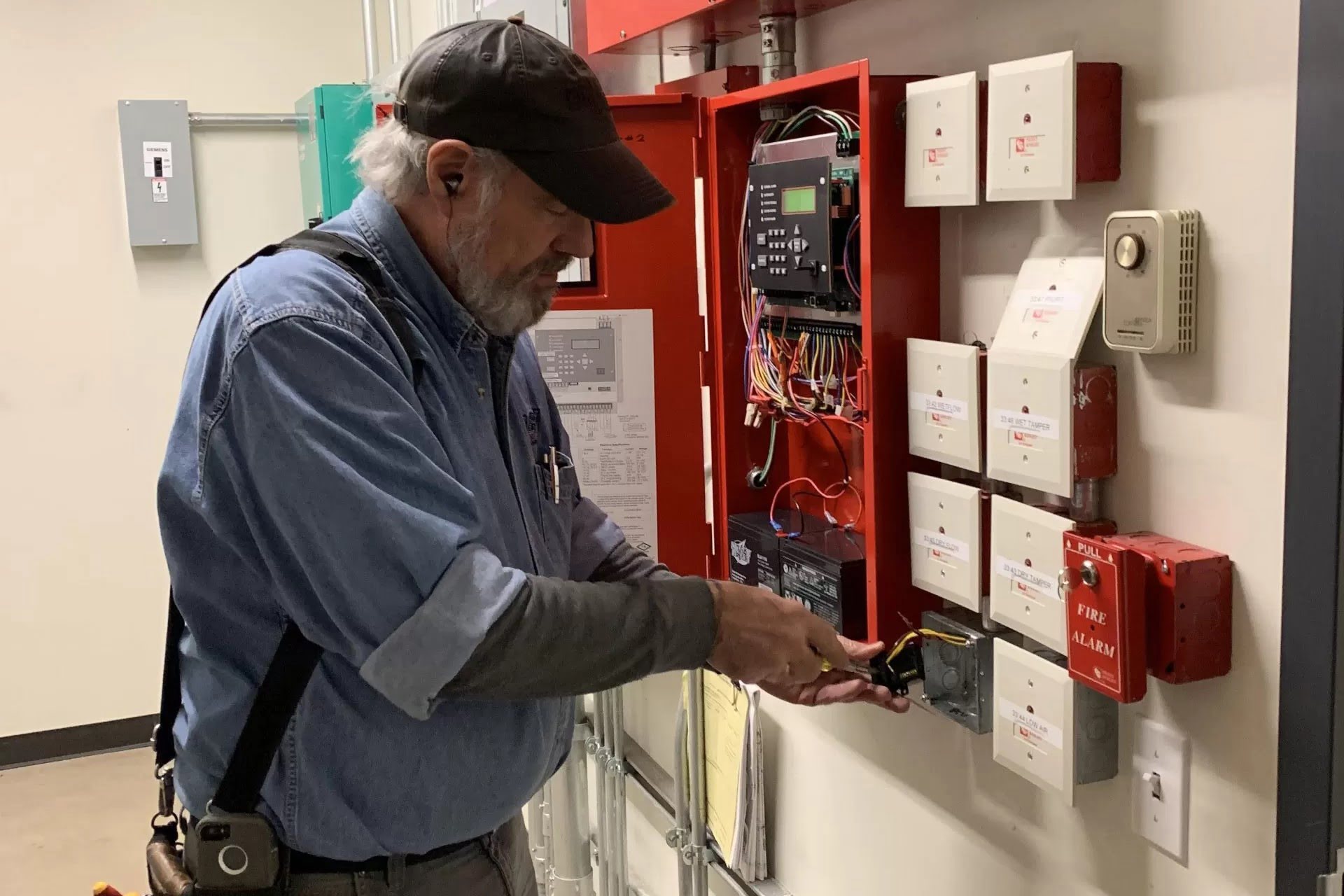Home>Home Security and Surveillance>What Is The Computation On An Alarm System
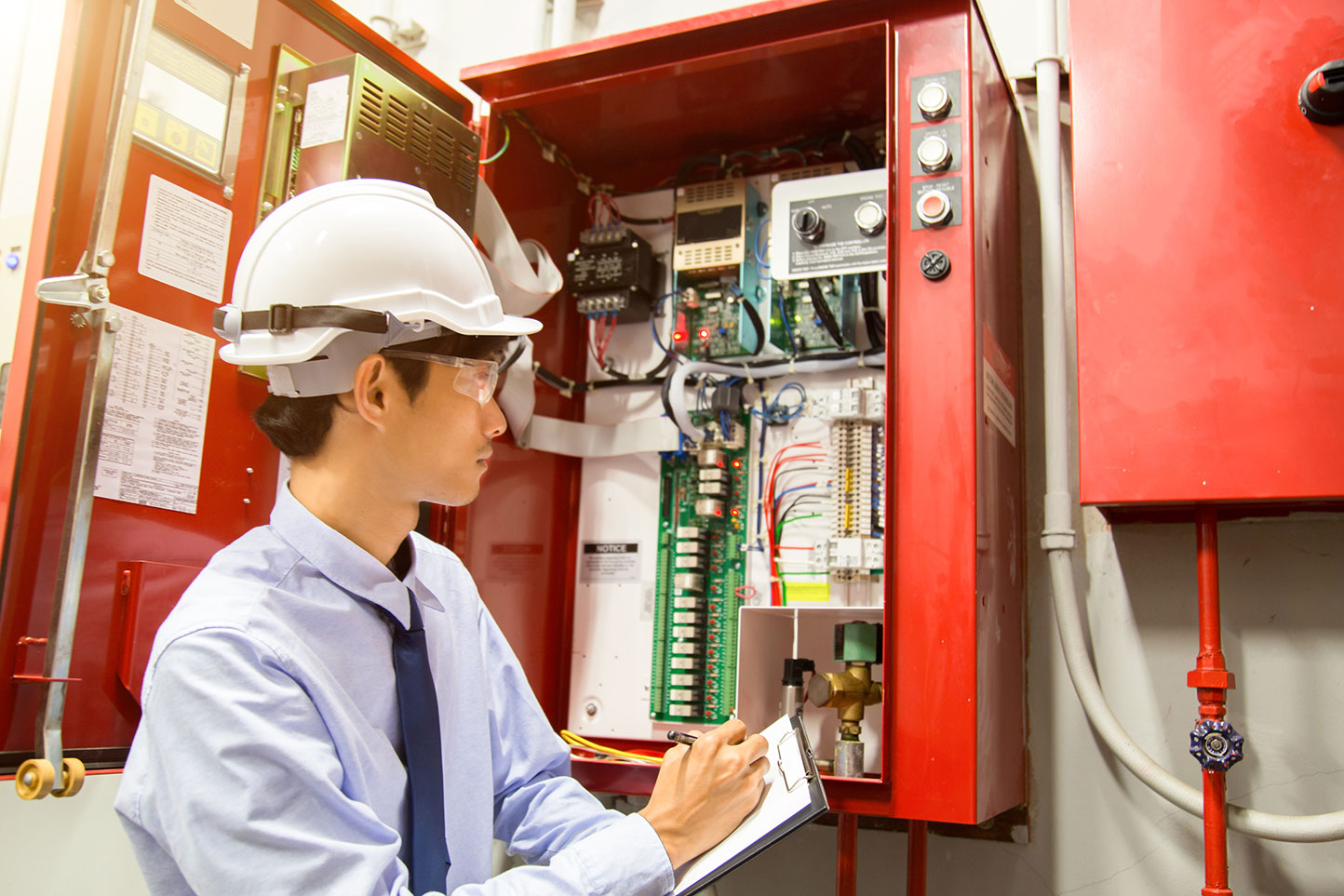

Home Security and Surveillance
What Is The Computation On An Alarm System
Modified: March 6, 2024
Learn about the computation involved in a home security and surveillance alarm system to ensure maximum protection for your property and loved ones. Enhance your knowledge on the technical aspects of home security systems.
(Many of the links in this article redirect to a specific reviewed product. Your purchase of these products through affiliate links helps to generate commission for Storables.com, at no extra cost. Learn more)
Introduction
Welcome to the world of home security and surveillance! In an era where technology has become an integral part of our daily lives, it’s important to prioritize the safety and security of our homes. That’s where home alarm systems come into play. These systems are designed to protect our homes from intrusions, burglaries, and other potential threats.
In this article, we will delve into the fascinating world of alarm system computation. We will explore the components of an alarm system, the computations involved, the algorithms used, communication protocols, and advancements in alarm system computing.
Before we dive into the technical details, let’s take a moment to understand the basic components that make up an alarm system. These components work in perfect harmony to ensure the safety of your home.
Read more: What Alarm Systems Use Alexa
Components of an Alarm System
1. Control Panel: The control panel is the brain of the alarm system. It receives signals from various sensors and activates the alarm when necessary. It is also responsible for managing the system settings.
2. Sensors: Sensors are strategically placed around the house to detect any suspicious activity. They can include door and window sensors, motion sensors, glass break sensors, and more. When these sensors detect any unauthorized entry, they send a signal to the control panel.
3. Keypad: The keypad allows you to interact with the control panel. It enables you to arm or disarm the system, enter security codes, and make changes to the system settings.
4. Siren: The siren is the audible alarm that alerts you and your neighbors in the event of a security breach. The loud sound serves as a deterrent and can scare off potential intruders.
Now that we have a clear understanding of the components, let’s explore the computations involved in alarm systems.
Key Takeaways:
- Alarm systems use advanced computations and algorithms to detect and respond to security threats, ensuring the safety of homes. Components like sensors, control panels, and sirens work together to protect against intrusions.
- The integration of IoT technology, cloud-based computing, and remote monitoring has made alarm systems smarter and more user-friendly. These advancements enhance home security by providing seamless connectivity and intelligent features.
Components of an Alarm System
An alarm system is comprised of various components that work together to ensure the security of your home. Let’s take a closer look at each of these components:
1. Control Panel
The control panel serves as the central hub of the alarm system. It is responsible for receiving signals from the sensors and executing the necessary actions based on those signals. The control panel is also where you can monitor and manage the system.
This essential component is typically located in a centralized and secure area of your home. It is equipped with a user interface, such as an LCD display or touch screen, that allows you to interact with the system. From the control panel, you can arm or disarm the system, set different security modes, and receive notifications about any alarm events.
2. Sensors
Sensors are the eyes and ears of your alarm system. They are strategically placed throughout your home to detect any unauthorized entry or suspicious activity. There are various types of sensors used in alarm systems:
- Door and Window Sensors: These sensors are installed on doors and windows to detect any opening or closing. They typically consist of two parts that are magnetically aligned. When the connection between the two parts is broken, such as when a door or window is opened, the sensor sends a signal to the control panel.
- Motion Sensors: Motion sensors use infrared technology to detect movement within a designated area. They are often placed in hallways, living rooms, and other areas where movement is expected. If an intruder is detected, the sensor sends an alert to the control panel.
- Glass Break Sensors: These sensors are designed to identify the sound frequency and pattern of breaking glass. They are commonly placed near windows or glass doors and are triggered when the sound of shattering glass is detected.
The sensors play a crucial role in detecting potential threats and providing real-time information to the control panel.
Read more: What Is Zoning Pertaining To Alarm Systems
3. Keypad
The keypad serves as the interface between you and the alarm system. It allows you to interact with the control panel, enter security codes, and make changes to the system settings. Typically, the keypad is used to arm or disarm the alarm system.
Modern keypads are equipped with features like touch screens, backlit buttons, and audible feedback. They provide an intuitive user experience and make it easy for you to control and monitor the alarm system.
4. Siren
The siren is the vocal component of the alarm system. When an alarm event is triggered, the siren emits a loud and attention-grabbing sound. The purpose of the siren is to alert you, your family, and your neighbors of a potential security breach, and to deter intruders from proceeding any further.
In addition to the audible alarm, some alarm systems also include visual or silent alarms. Visual alarms use strobe lights to provide a visual indication of an alarm event, while silent alarms can silently notify the monitoring center or send push notifications to your mobile device.
These components form the foundation of an alarm system and work in harmony to safeguard your home. Now that we understand the components, let’s take a deeper dive into the computations involved in an alarm system.
Computation in Alarm Systems
Alarm systems involve complex computations to ensure accurate and timely detection of security threats. Let’s explore the various computational processes that take place within an alarm system:
1. Processing Signals
When a sensor detects any activity, it sends a signal to the control panel. The control panel receives these signals and processes them to determine the nature of the event. This processing involves interpreting the sensor data and identifying whether it is a legitimate event or a false alarm.
Signal processing algorithms are employed to analyze the incoming data and extract relevant information. These algorithms may take into account factors such as signal strength, patterns, and timestamps to differentiate between normal activities and potential security threats.
Read more: What Are The Best DIY Home Alarm Systems
2. Analyzing Data
Once the signals have been processed, the next step is to analyze the data. This involves comparing the signal patterns and characteristics against predefined criteria and rules. The alarm system uses algorithms and logic to assess if the detected event indicates a security breach.
The analysis may involve considering multiple sensor inputs and applying decision-making algorithms to determine if an alarm needs to be activated. The system takes into account factors like the type of sensor triggered, the sequence of events, and any additional information available to make an accurate assessment.
3. Activating Alarms
If the analysis determines that a security breach has occurred, the alarm system triggers the activation of alarms. This can include sounding the siren, activating visual alerts, and sending alerts to the monitoring center or other connected devices.
The alarm activation process requires precise timing and coordination to ensure that the alert reaches the right individuals promptly. The system may also initiate communication with external services, such as emergency contacts or law enforcement agencies, to provide them with the necessary information about the situation.
4. Managing System Settings
Alarm systems often offer customization options to adapt to individual preferences and situations. The control panel allows users to manage system settings, such as arming or disarming specific zones, adjusting sensitivity levels of sensors, or setting up schedules for automated functions.
This involves managing configurations and settings within the control panel’s interface. Users can access these settings through the keypad or, in modern systems, through mobile apps or web-based interfaces. The computation behind managing system settings involves updating and storing user preferences and ensuring that the system operates according to those settings.
By effectively processing signals, analyzing data, activating alarms, and managing system settings, alarm systems provide a robust and reliable security solution. However, these computations rely on different algorithms and techniques. Let’s explore the algorithms used in alarm systems in the next section.
Algorithms Used in Alarm Systems
Alarm systems make use of various algorithms to enhance their functionality and improve the accuracy of threat detection. Let’s explore some of the common algorithms used in alarm systems:
Read more: What Kind Of Tape Is Used For Alarm Systems
1. Signal Processing Algorithms
Signal processing algorithms are used to analyze the signals received from the sensors in an alarm system. These algorithms aim to extract meaningful information from the raw sensor data, allowing the system to differentiate between normal events and potential security breaches.
Signal processing algorithms may involve techniques such as filtering, noise reduction, and pattern recognition. These algorithms help to identify patterns or anomalies in the sensor data that could indicate an intrusion or threat.
For example, a signal processing algorithm may analyze the sound frequencies detected by a glass break sensor to recognize the specific pattern of glass shattering. By accurately identifying this pattern, the algorithm can determine if a window has been broken and trigger the appropriate alarm response.
2. Machine Learning Algorithms
Machine learning algorithms play a crucial role in the advancement of alarm system technology. These algorithms are trained on large datasets to recognize patterns and make predictions based on those patterns.
In the context of alarm systems, machine learning algorithms can be utilized to improve the accuracy of threat detection. By analyzing historical data and learning from past events, these algorithms can identify patterns and behaviors associated with security breaches.
Machine learning algorithms can also adapt to changes in the environment and learn from new data to continuously improve their detection capabilities. They can detect emerging threats and adjust the alarm system’s settings accordingly for enhanced security.
3. Event Detection Algorithms
Event detection algorithms are focused on identifying specific events or conditions that warrant an alarm response. These algorithms take into account various factors such as sensor inputs, sequence of events, and predefined rules to determine if an event is a potential threat.
Event detection algorithms are designed to minimize false alarms while ensuring the timely detection of real security breaches. They incorporate logical rules and thresholds to make accurate decisions about when to activate alarms and alert the user.
For example, an event detection algorithm may analyze the input from different sensors and consider factors such as the time of day and the user’s presence or absence. If multiple sensors detect motion in certain areas of the house while the user is away, the algorithm may trigger the alarm and activate appropriate security measures.
By utilizing signal processing algorithms, machine learning algorithms, and event detection algorithms, alarm systems can achieve a high level of accuracy in detecting security threats and minimizing false alarms.
Now that we understand the algorithms involved in alarm systems, let’s look at the communication protocols used in these systems.
Communication Protocols in Alarm Systems
Communication protocols play a vital role in the exchange of information between the various components of an alarm system. Let’s explore two common communication protocols used in alarm systems: wired communication and wireless communication.
1. Wired Communication
Wired communication involves the use of physical cables to transmit data between the different components of an alarm system. This type of communication offers a reliable and secure connection.
In a wired alarm system, the sensors, control panel, keypad, and other components are interconnected using cables, such as Ethernet cables or dedicated wiring. The data travels through these cables from the sensors to the control panel, allowing for real-time monitoring and response.
Wired communication ensures a stable and steady flow of data, with minimal interference from external factors. It is less susceptible to interference from electromagnetic signals or environmental conditions, making it a reliable option for alarm system communication.
2. Wireless Communication
Wireless communication has gained popularity in recent years due to its convenience and flexibility. It allows the various components of an alarm system to communicate without the need for physical connections.
In a wireless alarm system, the sensors, control panel, keypad, and other components use wireless technology, such as Wi-Fi, Zigbee, or Z-Wave, to transmit data. The sensors send signals wirelessly to the control panel, which processes and responds to the information accordingly.
Wireless communication enables easier installation and flexibility in component placement. It eliminates the need for drilling holes or running cables throughout the house, simplifying the setup process.
However, wireless communication is susceptible to environmental factors such as distance, interference from other wireless devices, or signal blockage caused by walls or obstacles. Secure encryption protocols are essential to prevent unauthorized access and ensure data privacy in wireless alarm systems.
Both wired and wireless communication protocols have their advantages and considerations. The choice between the two depends on factors such as the layout of the house, the level of convenience desired, and the need for a secure and stable connection.
Now that we have explored the communication protocols, let’s move on to the advancements in alarm system computing.
Advancements in Alarm System Computing
Alarm system computing has evolved significantly in recent years, thanks to advancements in technology. These advancements have introduced new features and capabilities that enhance the functionality and convenience of alarm systems. Let’s explore some of these advancements:
1. IoT Integration
The integration of Internet of Things (IoT) technology with alarm systems has revolutionized home security. IoT integration allows alarm systems to connect and communicate with a wide range of smart devices and sensors.
With IoT integration, alarm systems can interact with devices such as smart door locks, smart thermostats, and security cameras. This integration enables seamless automation and control of different aspects of home security. For example, when the alarm system is armed, it can automatically lock all the doors, adjust the thermostat, and activate the security cameras.
IoT integration also provides homeowners with the ability to remotely monitor and control their alarm systems using smartphones or other internet-connected devices. This allows for convenient management of the alarm system, even when away from home.
2. Cloud-based Computing
Cloud-based computing has transformed the way alarm systems store and process data. Rather than relying on local storage and processing capabilities, alarm systems can now leverage cloud infrastructure.
Cloud-based computing offers several advantages for alarm systems. It provides secure and scalable storage for large amounts of data, allowing for the retention of event logs, camera footage, and other critical information. Cloud storage also ensures that data remains accessible even if the local system is compromised or damaged.
In addition to storage, cloud-based computing enables powerful data processing capabilities. Alarm systems can harness the computing power of the cloud to analyze sensor data, run machine learning algorithms, and perform advanced analytics. This allows for more accurate threat detection and intelligent decision-making.
3. Remote Monitoring and Control
Remote monitoring and control have become integral features of modern alarm systems. Through internet connectivity and mobile applications, homeowners can remotely monitor their alarm systems and receive real-time notifications about events.
Using a smartphone or other internet-connected device, homeowners can check the status of their alarm systems, arm or disarm them, and adjust system settings from anywhere in the world. They can also receive alerts and video feeds from security cameras in case of an alarm event or suspicious activity.
Remote monitoring and control provide homeowners with peace of mind and a heightened level of convenience. They allow for rapid response to alarm events, the ability to grant temporary access to trusted individuals, and the flexibility to manage the alarm system according to changing needs.
These advancements in alarm system computing have transformed home security, making it more intelligent, connected, and user-friendly. Whether it’s through IoT integration, cloud-based computing, or remote monitoring and control, these advancements continue to enhance the safety and convenience of alarm systems.
Now, let’s wrap up our discussion on alarm system computing.
Conclusion
Alarm systems play a crucial role in ensuring the safety and security of our homes. Through the advancements in alarm system computing, these systems have become smarter, more efficient, and more convenient to use.
We explored the various components that make up an alarm system, including the central control panel, sensors, keypad, and siren. These components work together to detect security breaches and respond accordingly.
Computation plays a vital role in alarm systems, from processing signals and analyzing data to activating alarms and managing system settings. Signal processing algorithms extract meaningful information from sensor data, while machine learning algorithms improve threat detection accuracy. Event detection algorithms determine when to activate alarms based on predefined rules and sensor inputs.
Communication protocols, such as wired and wireless communication, enable seamless data exchange between the alarm system components. Where wired communication offers stability and reliability, wireless communication provides flexibility and convenience.
Advancements in alarm system computing have led to innovative features and capabilities. IoT integration allows for seamless connectivity with smart devices and remote monitoring and control of the alarm system. Cloud-based computing provides secure storage and advanced data processing capabilities. These advancements have made alarm systems more intelligent, connected, and user-friendly.
In conclusion, alarm system computing has transformed the landscape of home security. With cutting-edge technologies and algorithms, these systems provide a robust and reliable defense against potential security threats. As technology continues to evolve, we can expect even more exciting advancements in alarm system computing, further enhancing the safety and peace of mind for homeowners around the world.
Frequently Asked Questions about What Is The Computation On An Alarm System
Was this page helpful?
At Storables.com, we guarantee accurate and reliable information. Our content, validated by Expert Board Contributors, is crafted following stringent Editorial Policies. We're committed to providing you with well-researched, expert-backed insights for all your informational needs.
